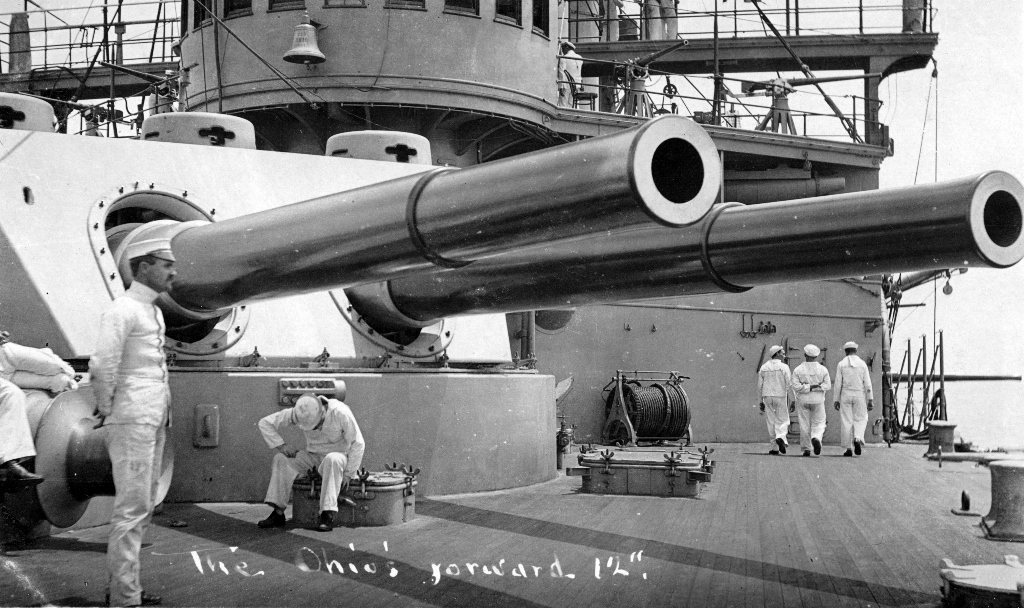
The very fast burning, smoky propellants of the 1800s gave way to slower burning "smokeless" powders near the turn of the century. These propellants gasified almost completely and could accelerate a projectile all the way along a gun of 40 or more calibers in length. Thus, the high-velocity naval gun was born. A side benefit was the flatter trajectory, which led to more accurate firing at longer ranges, which in turn led to centralized fire control and then ultimately to the "Dreadnought" designs.
In the case of the USN, the development of smokeless powder led to a new generation of long-barrel naval guns, including the 12"/40 (30.5 cm). This gun was used on several pre-dreadnoughts and monitors. The early guns suffered from excessive bore erosion, necessitating a reduction in the propellant charge to lower the muzzle velocity. There were also problems with the increased chase pressure causing burst guns. In January 1905 the muzzle and chase of Gun No. 49 were blown off while being used at the Naval Proving Grounds to test tubular NC. It was determined that while the chamber pressure was at an acceptable level, the pressure in the chase was too close to the strength curve for safety. Similarly, a year later in February 1906 Gun No. 36 blew off its muzzle and a section of the chase while being used at the Naval Proving Grounds to test projectiles. Although the powder charge used for these tests was the standard size, review showed that larger charges had been used on this gun in the past. As a result of these failures and the similar ones for the 12"/35 (30.5 cm) Mark 1 guns, a program of chase hooping to the muzzle for all 12"/40 (30.5 cm) guns was started in 1906, this program being completed by 1913. Unfortunately, before she could be rearmed, USS Georgia (B-15) suffered a burst gun in her forward turret on 22 September 1910 that blew off the muzzle as far back as the jacket. This may have been Gun No. 41. Fortunately, no one was injured in any of these failures.
The Navy found that these re-hooped guns were now much stronger, almost the equal of the later 12"/45 (30.5 cm) Mark 5 guns which had been expressly designed for use with smokeless powders.
Perhaps the most interesting use of this weapon was on the two-level, dual-caliber turrets that were unique to the US Navy. The concept behind these mountings was that the large caliber weapons fired slowly, perhaps once every ninety seconds, while the 8"/45 (20.3 cm) guns fired about three times as fast. That meant that the smaller guns could fire one or two shots at a second target while the larger guns were reloading. Unfortunately for this design, better crew training and more careful attention to details led to a rapid improvement in the rate of fire for large caliber weapons, eliminating the advantage of the smaller guns over the larger ones. As a result, the dual-caliber turrets could really only fire at a single target and the smoke from both calibers interfered with sighting unless they were both fired together. The concept did lead to superfiring main-caliber turrets when the South Carolina class dreadnoughts were designed a few years later.
In 1908 AP projectiles were fitted with a longer ballistic cap of 7crh which reduced drag and thus improved their penetration ability at longer ranges.
Mark 3 consisted of liner, jacket and eight hoops with the outer hoop ending 83 inches (111 cm) from the muzzle. It differed from earlier 12" (30.5 cm) guns by having a slide surface and a key rather than straps attaching it to the gun carriage. Mod 1 had a smaller chamber but similar performance. Mod 2 had a single long hoop extending to the muzzle. Mod 3 had a nickel-steel liner and a gun-steel hoop extending to the muzzle. Older guns were upgraded to Mod 3 as they came in for relining and repair. A total of 42 Mark 3 guns were built (see "Note on Sources" below). Mark 4 was similar to the Mark 3 Mod 2 and consisted of liner, jacket and seven hoops with the outer tube extending to the muzzle and a smaller chamber. Mark 4 Mod 1 had a nickel-steel liner, similar to the Mark 3 Mod 3. For both Mark 3 and Mark 4, the early guns had uniform twist while the later guns had increasing twist. All of these guns used Fletcher breech mechanisms with Welin breech plugs. All Mark 3 and Mark 4 guns were "Surveyed and Condemned" by 1924.
A Note on Sources: Norman Friedman in "Naval Weapons of World War One" on page 168 says that it was Gun No. 36 and Gun No. 41 (not 49 as noted above) that suffered burst barrels "during proof tests but were repaired and accepted" back into service. This work does not mention the burst gun on USS Georgia (B-15). In comparison, the 1905 "Annual Report of the Chief of the Bureau of Ordnance" says Gun No. 49 burst and the 1906 "Annual Report" says that Gun No. 36 burst. Based upon the dates and the fact that these are primary sources, I believe that it was Guns No. 36 and 49 (not 41 as stated by Dr. Friedman) that burst but were repaired. Furthermore, "United States Naval Guns: Their Marks and Modifications" Ordnance Pamphlet No. 127, December 1916, Revised January 1919, says on page 39 that, contrary to Dr. Friedman, Gun No. 41 had its chase broken off and was not repaired. Based upon this gun number vs. the construction dates of the ships armed with this weapon, I would speculate that No. 41 may actually have been the gun that burst on USS Georgia (B-15) in 1910. Contemporary newspaper articles (one listed below in Sources) of that time note that this gun was ten years old and worn at the time of the accident. All four of the guns on USS Georgia (B-15) were replaced soon after the accident. The Navy may have decided that it was not worthwhile to repair Gun No. 41 as newer and rebuilt guns were available from spare stock and newer ships were being armed with the more powerful 12"/45 (30.5 cm) Mark 5.
Something more about Gun No. 49: Dr. Friedman states this was the first Mark 4 gun as built, but this does not seem to be quite correct. Gun No. 49 was heavily damaged in the 1905 accident, losing both its muzzle and chase. From the description in the 1905 "Annual Report," Gun No. 49 was definitely a Mark 3 (Mod 0) gun as it was not hooped to the muzzle. I suggest that the more likely history is that Gun No. 49 started life as a Mark 3 gun, burst its barrel in 1905, was heavily modified during repairs and only then may it have been redesignated as a Mark 4 gun. However, it is more likely that such a repaired gun would have been designated as Mark 3 Mod 3 as were other rebuilt guns. Alternatively, there is a good possibility that the damaged No. 49 gun was scrapped and a new gun was built to take its place. The USN would have serialized this new gun as No. 49A. In this scenario, this new gun would have been built to the Mark 4 design.
| Designation | 12"/40 (30.5 cm) Mark 3 and Mark 4 |
|---|---|
| Ship Class Used On | Arkansas (M-7), Maine (B-10) and Virginia (B-13) classes |
| Date Of Design | 1899 |
| Date In Service | 1902 |
| Gun Weight | 116,480 lbs. (52,834 kg) (including breech)
114,960 lbs. (52,145 kg) (without breech) |
| Gun Length oa | 493 in (12.522 m) |
| Bore Length | 480 in (12.192 m) |
| Rifling Length | N/A |
| Grooves 1 | Guns with Uniform twist: (48)
Guns with Increasing twist: (72) |
| Lands | N/A |
| Twist 1 | Early guns: Uniform twist RH 1 in 25
Later guns: Increasing RH 0 to 1 in 25 |
| Chamber Volume | N/A |
| Rate Of Fire 2 | As commissioned: 0.66 rounds per minute
After about 1906: 2 rounds per minute |
- ^The original Rate of Fire was greatly improved by more careful loading practices and better training.
| Type | Bag |
|---|---|
| Projectile Types and Weights | AP - 870 lbs. (394.6 kg)
Common - 870 lbs. (394.6 kg) |
| Bursting Charge | AP - 24.0 to 24.7 lbs. (10.9 to 11.2 kg) Black Powder and later Explosive D 1a Common - 28.0 lbs. (12.7 kg) Black Powder |
| Projectile Length | N/A |
| Propellant Charge | 237.5 lbs. (107.7 kg) [for 2,400 fps (732 mps) MV] |
| Muzzle Velocity 2a | Original design: 2,800 fps (853 mps)
First Derating: 2,600 fps (792 mps) Final Derating: 2,400 fps (732 mps) |
| Working Pressure | 16.0 tons/in2 (2,520 kg/cm2) |
| Approximate Barrel Life | 100 - 150 rounds at 2,400 fps (732 mps) |
| Ammunition stowage per gun | 60 rounds |
| Elevation | With AP Shells |
|---|---|
| 15.5 degrees
(maximum elevation of turrets) |
19,000 yards (17,370 m) 1b |
- ^It should be mentioned that this maximum range was of little use at the time these ships were built. Fire control systems and rangefinders capable of accurately firing at ranges over 10,000 yards (9,140 m) were nonexistent.
| Range | Side Armor | Deck Armor |
|---|---|---|
| 6,000 yards (5,490 m) | 14.6" (371 mm) | --- |
| 9,000 yards (8,230 m) | 11.6" (295 mm) | --- |
| 12,000 yards (10,920 m) | 9.4" (239 mm) | --- |
- This data is for face-hardened Harvey plates from "Ordnance Data Sheets" of 1905 as published in "US Naval Weapons" and is for the older shell design. These figures are for a muzzle velocity of 2,600 fps (640 mps).
| Range | Side Armor | Deck Armor |
|---|---|---|
| 6,000 yards (5,490 m) | 12.9" (328 mm) | --- |
| 9,000 yards (8,230 m) | 10.7" (272 mm) | --- |
| 12,000 yards (10,920 m) | 8.7" (221 mm) | --- |
- This data is from "Elements of US Naval Guns" of 1918 as published in "US Naval Weapons" and is for the 7crh projectile at a muzzle velocity of 2,400 fps (732 mps). Data is corrected for angle of fall and may also refer to harder armor than that used for the 1905 data.
| Designation | Two-gun Turrets
Arkansas (2) and Maine (2): Mark 4 1e Dual-Caliber Turrets
|
|---|---|
| Weight | Mark 4: N/A
Mark 5: 604 tons (614 mt) |
| Elevation | Mark 4: -3 / +15 degrees
Mark 5: -7 / +20 degrees |
| Rate of Elevation | N/A |
| Train | about -150 / +150 degrees |
| Rate of Train | N/A |
| Gun Recoil | N/A |
| Loading Angle | 0 degrees |
- ^The Mark 4 introduced the barbette/gunhouse style of construction to US ships and used a spring return system.
- ^The Mark 5 was the 12"/8" (30.5 cm/20.3 cm) dual-caliber turret.
- As in all US pre-dreadnought designs, these turrets had endless chain hoists running on unenclosed rails direct from the lower chambers to the loading position. After an accident on USS Missouri (B-11) in April 1904 that saw a flare-back from a gun breech which killed five officers and twenty nine men, automatic shutters were installed to separate the ends of the hoists and breech gas ejectors were fitted to prevent future flarebacks. In April 1906, exposed switch gear on USS Kearsarge (B-4) caused a powder burn that killed 10 officers and men. As a result, all electrical equipment that might cause a spark hazard were removed from all USN mountings between 1907 and 1908. Bulkheads were installed in the turrets between the guns. These changes became standard on subsequent designs.
- These turrets used the "grass-hopper" counter recoil system whereby a spring box, located under the gun pit, was connected via two heavy, pivoted arms to the gun yoke. See 10"/40 (25.4 cm) Mark 3 datapage for a sketch of a similar grasshopper recoil system.
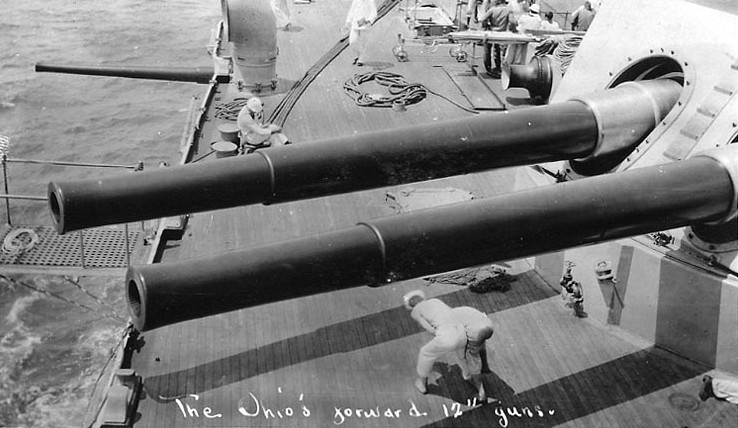
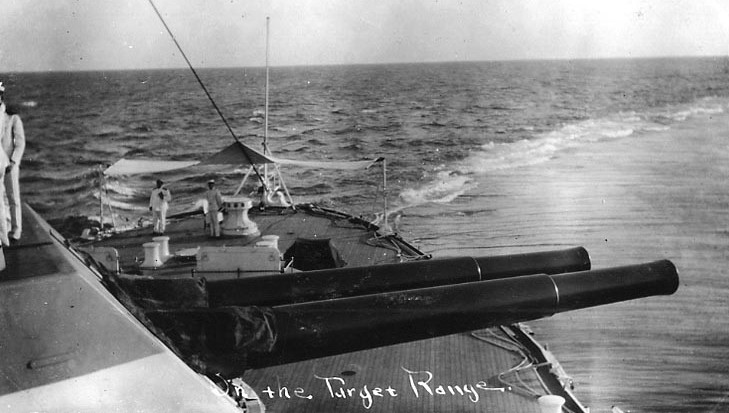
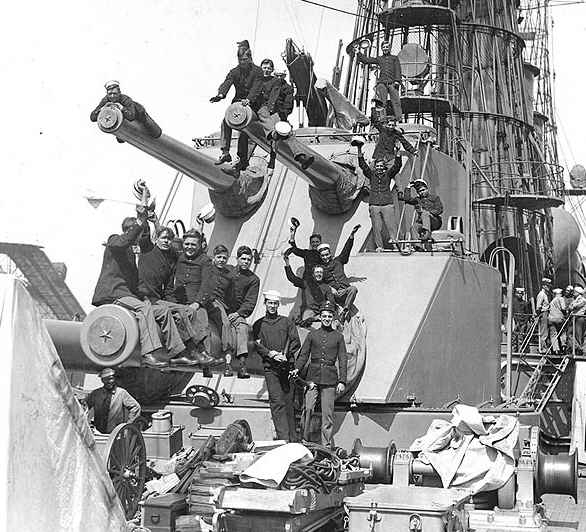
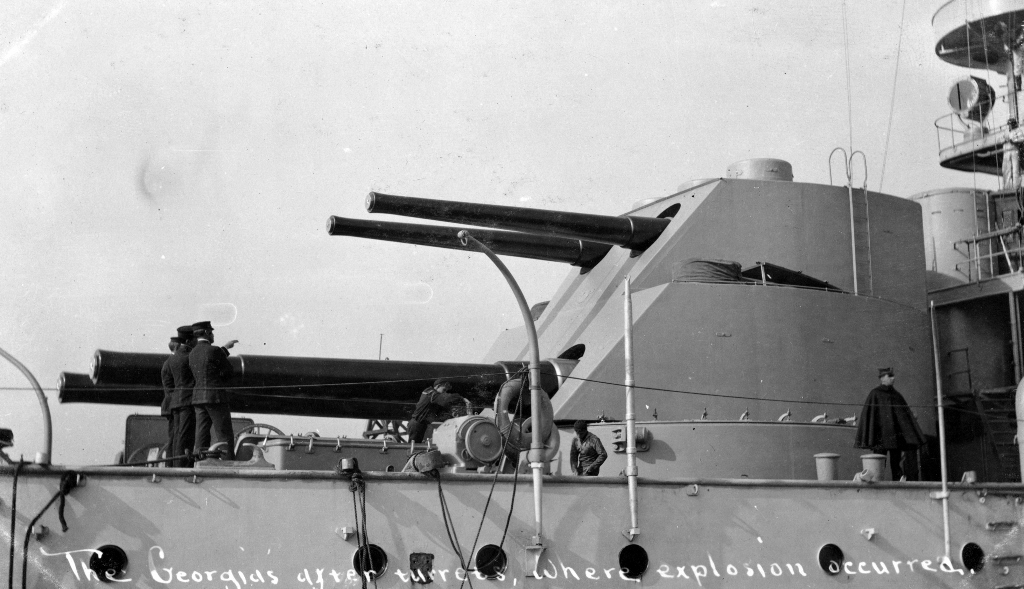
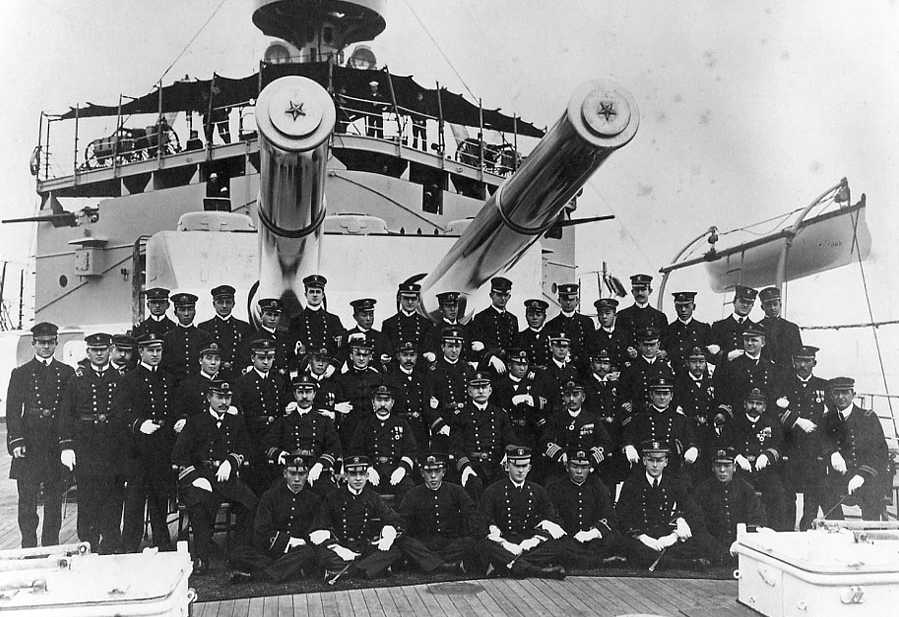
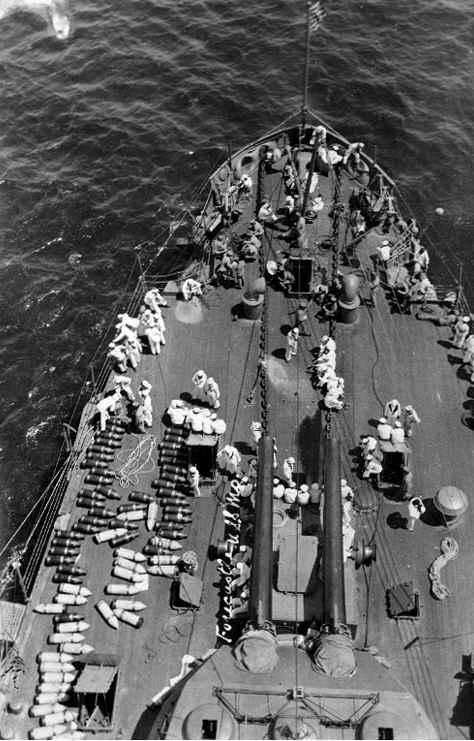
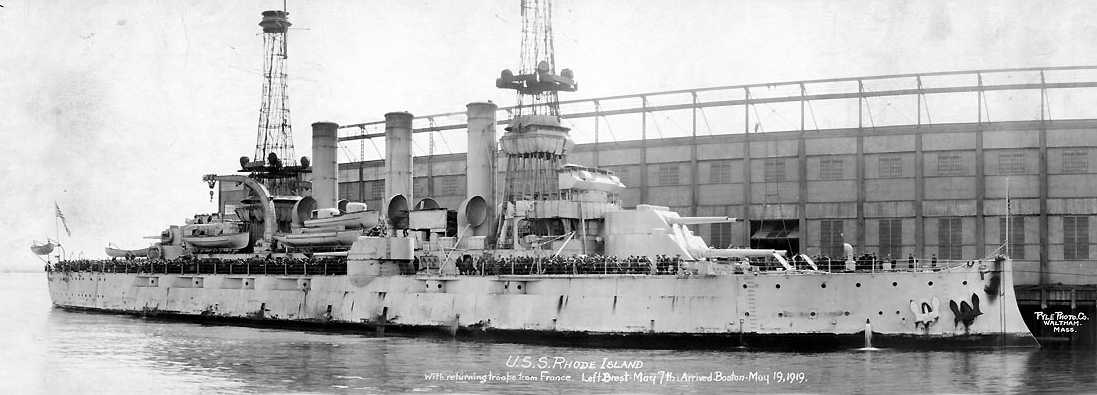
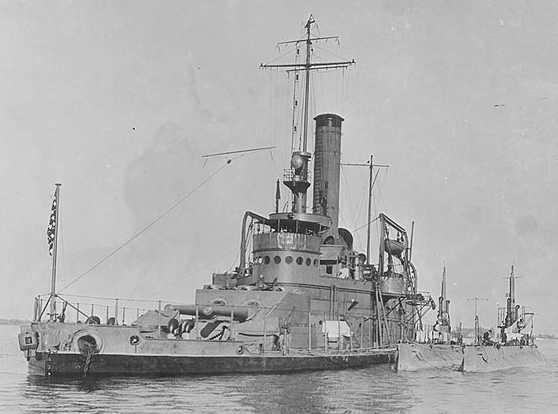
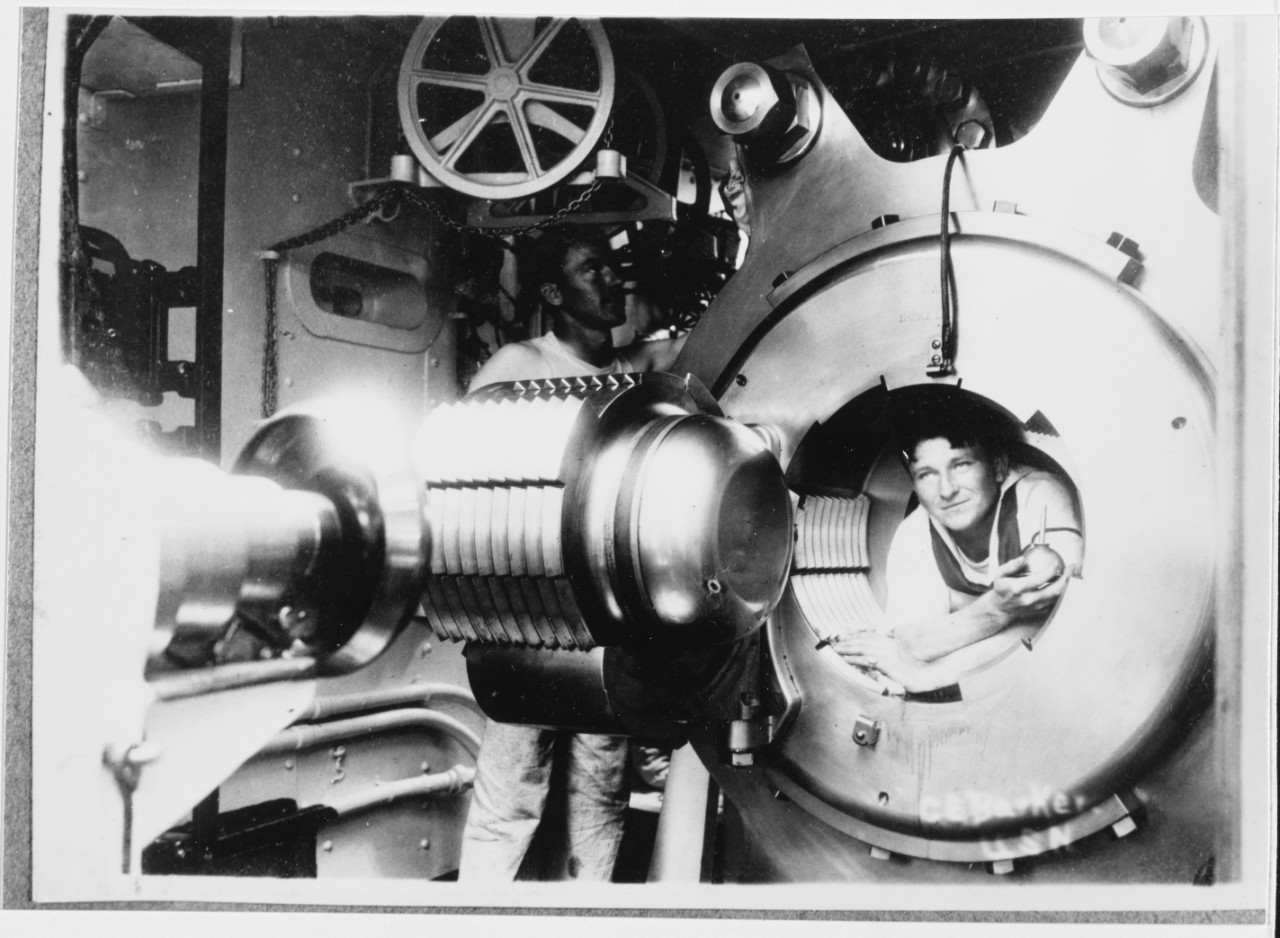
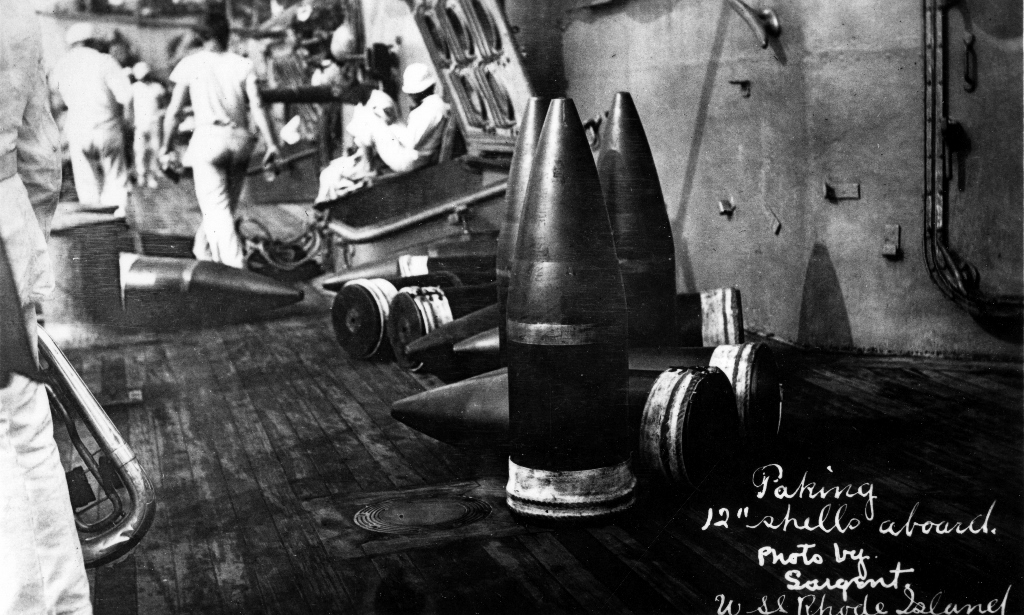
"US Battleships: An Illustrated Design History," "US Naval Weapons" and "Naval Weapons of World War One" all by Norman Friedman
---
"Naval Ordnance - A Text Book" revised in 1915 by Lt. Cmdr. Roland I. Curtain and Lt. Cmdr. Thomas L. Johnson
"Ordnance and Gunnery, A Text-book Prepared for the Use of the Midshipmen of the United States Naval Academy" by Officers of the U.S. Navy (1910)
"Annual Report of the Chief of the Bureau of Ordnance to the Secretary of the Navy" for the years 1905, 1906, 1907 and 1909, available here
"United States Naval Guns: Their Marks and Modifications" Ordnance Pamphlet No. 127, December 1916, Revised January 1919
---
"Big Gun Explodes" article in the 23 September 1910 issue of The Evening Star (Washington, D.C.)
---
Gene Slover's Navy Pages
---
Special help by Steve Valley
15 September 2008 - Benchmark
21 April 2015 - Fixed link, added some new links to other Weapon datapages
09 May 2015 - Redid photograph of USS Ohio (B-12)
19 July 2016 - Converted to HTML 5 format
20 December 2018 - Reorganized notes
30 October 2020 - Added ammunition data, details on burst guns and details on construction
28 February 2021 - Minor changes for clarity
14 March 2022 - Corrected typographical error
21 June 2023 - Added photograph of breech mechanism on USS Maine (B-10) and comments about Fletcher breech mechanism
29 August 2023 - Added comments about Guns No. 49 and 49A
10 January 2025 - Corrected name of ship that suffered a powder burn in 1906
